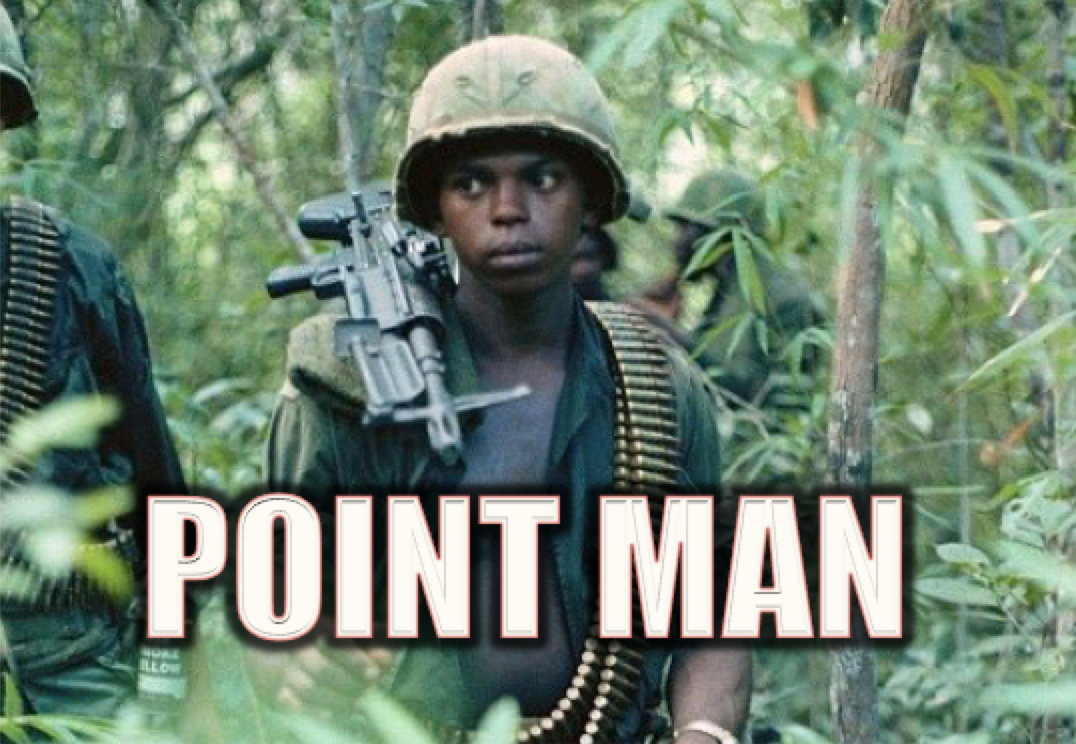-
Posts
39,005 -
Joined
-
Last visited
Content Type
Profiles
Huddle Wiki
Forums
Gallery
Everything posted by PhillyB
-

Along the Sidelines - Redskins at Panthers
PhillyB replied to Jeremy Igo's topic in Carolina Panthers
where the fug were you? -

Official Redskins at Panthers Gameday Thread
PhillyB replied to Jeremy Igo's topic in Carolina Panthers
delaire sighting! -

Official Redskins at Panthers Gameday Thread
PhillyB replied to Jeremy Igo's topic in Carolina Panthers
velasco? chris scott? -

Official Redskins at Panthers Gameday Thread
PhillyB replied to Jeremy Igo's topic in Carolina Panthers
great stop -

Official Redskins at Panthers Gameday Thread
PhillyB replied to Jeremy Igo's topic in Carolina Panthers
light these fugs up -

Official Redskins at Panthers Gameday Thread
PhillyB replied to Jeremy Igo's topic in Carolina Panthers
colin jones gets two picks today -

Official Redskins at Panthers Gameday Thread
PhillyB replied to Jeremy Igo's topic in Carolina Panthers
on my way to denver's panthers bar. this is gonna fuging rock -

Evolution, Adaptation, and the Mike Shula Offense
PhillyB replied to PhillyB's topic in Carolina Panthers
-

Evolution, Adaptation, and the Mike Shula Offense
PhillyB replied to PhillyB's topic in Carolina Panthers
really?! i've arrived. -

Evolution, Adaptation, and the Mike Shula Offense
PhillyB replied to PhillyB's topic in Carolina Panthers
i wondered when someone was going to bring that up it was that or some really nasty hairy female homo erectus breasticles -

Evolution, Adaptation, and the Mike Shula Offense
PhillyB replied to PhillyB's topic in Carolina Panthers
oh haha i thought you were talking about the article's assertion -

Evolution, Adaptation, and the Mike Shula Offense
PhillyB replied to PhillyB's topic in Carolina Panthers
why do you say that? -

Evolution, Adaptation, and the Mike Shula Offense
PhillyB replied to PhillyB's topic in Carolina Panthers
were you there? -

Evolution, Adaptation, and the Mike Shula Offense
PhillyB replied to PhillyB's topic in Carolina Panthers
no, not go routes specifically, but lots of long, slow-developing stuff. half those deep routes were punctuated by double moves halfway up the field, probably designed to get subpar corners to bite or get turned around. not a bad plan really, just needed to be adjusted as soon as TEN started storming the gates every down. -

Evolution, Adaptation, and the Mike Shula Offense
PhillyB replied to PhillyB's topic in Carolina Panthers
john fox's philosophy was that players should adapt to the scheme, rather than the scheme adapting to the players. aside from the classic run-run-draw dynamic, this was probably the biggest criticism of his actual football philosophy. fox was notorious for trying to shoehorn players into inflexible positions and insisting their failures at that position were a judgement of their value. fox would've keep running cotchery on go routes until he was fired. shula has adapted... probably part of why gettleman (who has no qualms about dropped the axe on underperformers) has decided he's worth keeping around. -

Evolution, Adaptation, and the Mike Shula Offense
PhillyB replied to PhillyB's topic in Carolina Panthers
i was going to do ms plorin in edvard munch style but i'm in denver all week for a conference, so it's a minor miracle i even got this article out at all -

Evolution, Adaptation, and the Mike Shula Offense
PhillyB replied to PhillyB's topic in Carolina Panthers
tennessee made adjustments after those first two drives; they went from playing a ton of zone and hoping their front four would get pressure to sending the house on nearly every down. it was a quick shift by the titans and it took shula most of the game to respond. -
Approximately 2.5 million years ago a major shift occurred among earth's proto-human species. Up until that point, the most advanced form of primates were Australopithecines. Large and robust, they employed arboreal physical features to forage in the trees and, to a limited extent, the ability to walk upright to gather food and hunt game. But fossil evidence shows a sudden explosion in ability and habit, the result of which is the relatively quick emergence of a new species - Homo habilis. Marked by an increased brain-mass-to-body-size ratio and the first recorded use of tools, H. habilis is roundly agreed upon as beginnings of something new, something almost human. Much debate circles around the process of becoming human. Most of it has focused on key foods that allowed for evolutionary selection and adaptation to acquiring it; the most notorious one is the idea that hunting vertebrates was the trigger for the explosion of human traits. The model goes like this: Meat is an incredibly valuable part of the diet; Individuals best equipped to hunt meat are those that can stand tallest and walk the longest distances; Individuals that can stand the tallest and walk the longest distances breed more, and nature selects for those traits; Thus, populations gradually become better equipped to hunt. This model is generally accepted. Using it as a base, others hypothesize that, for instance, the invention of fire and cooking led to the formation of social solidarity, male-female pair bonds, and even language; those are, of course, heavily debatable. But the above model endures, and can be summed up as follows: Adapt to your ecological niche or you're dead. The same is also true in football. Scientists confirm Andrew Luck is the closest living relative of H. habilis Much like the survival of a species is dependent on its ability to adapt to the often-changing environment around it, offensive coordinators in the NFL must act and react according to defensive situations and gameplans, both in the short term (in individual games) and the long term (throughout the course of the season, or several seasons.) Our own Mike Shula remains enigmatic precisely because his apparent short-term flaws must be weighed against what appear to be long-term adaptive strengths. Let's break them down. Short-term Shula Last week the Titans came in with a very specific game plan: make up for the injury-wracked cornerback position by sending blitzers on nearly every down. It was a very good plan, actually, taking advantage of an extremely underrated defensive line able to hold gaps well enough allow linebackers through. In fact, if it wasn't for several defensive gaffes (like playing unblitzed zone coverage against Greg Olsen) and a Carolina defensive line that controlled the line of scrimmage all day, Mularkey may have sent the Panthers packing with their first loss of the season. Mularkey's defense was relentless, and Mike Shula went three quarters without making adjustments to counter it. The obvious call for constant pressure is screens; you let the blitzers cross the line of scrimmage and then lob it over their heads into a convoy. If you don't do that you keep in extra guys to protect and release them upfield, or at least designate a hot receiver to occupy the vacated zone. Instead we saw this: Four go routes, developing at various phases twenty yards downfield, and what looks like a very deep, complex option break to the sideline by the tight end. No hot routes, no designated protection, all in the face of an incredibly obvious blitzing situation and three linebackers telegraphing the impending rush. The play, predictably, was a sack. The Titans tallied five of them on the day, and would've had more if not for Cam's escapability. Shula's adjustments did not come until midway through the first quarter when he called a smoke screen and a few complementary underneath routes. This kind of rigidity has been symptomatic of Shula's tenure as offensive coordinator, and an enduring criticism of his ability to adapt to defensive schemes in a timely manner. Long-term Shula Calls to unseat Mike Shula have been a constant since week four of the 2013 season. But 2015's 4th-ranked Panthers offense has critics doubting their own fiery prognostications, supporters crowing their final victory, and everyone else trying to figure out whether Cam's outstanding play is making Shula look good, vice versa, or a combination of the two. Whoever gets the credit, and however deficient he may be in game-time adjustments one thing is clear: Mike Shula has evolved. He has adjusted in two critical ways that have aided in the success of this year's offense. 1) He's given Cam options at the line. Much has been made in years past of Shula's inflexible play-calls; conversation has buzzed around microanalysis of Shula's off-the-cuff remarks about Cam's frustration at play calls. But around the beginning of this season we began seeing a much different dynamic: play calls coming in at a much faster rate, leaving time for on-field diagnosis. No longer does Cam walk up to the line with 0:04 on the play clock to point out the blitzing linebacker. Instead Shula gives Cam a predetermined suite of plays based on the defensive personnel that Cam can select based on the defensive alignment. Such an instance took place midway through the first quarter. In the following frame, the offense lines up with a play call that, based on the personnel, is probably something like the following. Notice Stewart shifting out to a slot position from the backfield. But Cam looks at the formation and immediately knows something's up. "No sir, this is some bullshit," he says, probably out loud, seeing defensive lineman standing up and linebackers clustered oddly and showing blitz. In past years the play clock would've been at zero already, so Cam would've had no choice but to snap the ball. Instead he walks up the the line and changes the play to another in the situational set. If those linebackers are blitzing, the standing lineman may be getting ready to drop into coverage, into the flats to ruin any dump-offs or into the middle of the field to jump any crossers. Cam approaches the formation and changes the play. Notice the MLB here changing the play as a result (or pretending to.) The new play retains the formation of the old one, but with new route combos. Most notable are Stewart and Dickson, who now stay in as blockers before releasing upfield as blitz outlets. Ed Dickson's spot keeps the SLB low and Philly Brown's route keeps the deep safety high, and the throw to Greg Olsen is predictably successful, for a critical first down. Carolina kept the momentum and went on to score. In years past, we may not have seen the offense have time to recover. 2) Shula has abandoned bad plays. This is his other adaptation, in the truest sense of the word. Behaviors that don't result in positive gain are selected against by nature and NFL front offices, and Shula has apparently felt the pressure. The Bersin-on-bubble-screens trope is a thing of the past. So are Cotchery's misfit go routes. Rather than forcing players into variable roles because of a philosophy, Shula has recognized weaknesses on the roster and instead adapted the personnel groups accordingly. John Fox made that precise error for the latter half of his tenure here; his failure to adapt was ultimately his downfall. Will Mike Shula's ability to adapt earn him staying power in the NFL? That remains to be seen. The good here doesn't necessarily mask the bad. But like Rivera, he is learning, adapting, changing in ways that make him and his team the most fit to sit at the top of the pile. Homo habilis' adaptation begat Homo erectus, which begat Homo neanderthalensis, which gave way to modern humans; is it too much to hope that it'll allow Shula and the Panthers to go 10-0? View full article
- 50 replies
-
- 63
-

-

Official Panthers - Titans Gameday Thread
PhillyB replied to Jeremy Igo's topic in Carolina Panthers
shula had better adjust now -

Official Panthers - Titans Gameday Thread
PhillyB replied to Jeremy Igo's topic in Carolina Panthers
play man and send the blitz all day -

Official Panthers - Titans Gameday Thread
PhillyB replied to Jeremy Igo's topic in Carolina Panthers
go us -

On the Slaying of Aaron Rodgers (and other football titans)
PhillyB replied to PhillyB's topic in Carolina Panthers
actually that could be profitable. didn't alice pay four grand for a unsigned print? -

On the Slaying of Aaron Rodgers (and other football titans)
PhillyB replied to PhillyB's topic in Carolina Panthers
-

On the Slaying of Aaron Rodgers (and other football titans)
PhillyB replied to PhillyB's topic in Carolina Panthers
poseidon was easy as hell. hydra was the worst -

On the Slaying of Aaron Rodgers (and other football titans)
PhillyB replied to PhillyB's topic in Carolina Panthers
it's avant-garde... aka i have no talent

